This tutorial describes how to use Hasleo Backup Suite to restore a GPT system backup image to an MBR disk. It also covers key concepts for this specific restoration scenario.
If you're just a regular computer user, you probably haven't heard of Legacy BIOS and UEFI, but if you're a computer geek or techie, you should have heard of them. Before we dive into what Legacy Boot and UEFI Mode are, let's briefly discuss how a computer boots, understanding this will help clarify some concepts.
When you turn on your computer, the firmware code performs a Power On Self Test (POST) initialization and sets up all the connected peripherals, after which the firmware code will load the operating system.
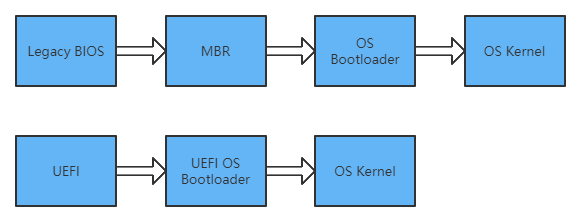
On Legacy BIOS computers, the firmware code automatically reads and executes the code in the first sector (MBR) on the boot disk, completing the Power On Self Test (POST) initialization and setting up peripherals. The MBR code is the first piece of operating system code executed by a computer. Its specific role is to load and execute the OS boot loader from the boot partition, which finally completes the OS boot through the operating system loader.
Unlike the Legacy BIOS, the firmware code on a UEFI computer directly loads the OS boot loader. This loader then completes the startup process, making the UEFI OS loader the first piece of the operating system code to be executed by the computer. Booting in UEFI mode requires a GPT disk containing an EFI System Partition (ESP) as the boot disk. This partition stores the boot loader files (.efi files), which must reside in a standardized path across computers of the same architecture. For instance, on 64-bit Intel systems, the path is \EFI\Boot\bootx64.efi. These are specified by the UEFI specification, and the operating system can create a boot entry to set a custom boot loader path when the operating system is installed.
The Master Boot Record (MBR) partition scheme is the partition scheme used by default for legacy BIOS computers, and due to historical limitations, it can only support disks with a maximum capacity of 2 TB, and only supports 4 primary partitions and several logical partitions.
The GUID partition table (GPT) partition scheme is a new partitioning scheme introduced by the UEFI specification, which supports disks with a maximum capacity of 9.4 ZB (9,400,000,000 TB) and an unlimited number of primary partitions.
A GPT disk cannot be used as the boot disk on legacy BIOS-based computers, just as an MBR disk is not supported for booting on UEFI-based systems. We will not introduce MBR and GPT in detail here. For more detailed information about MBR and GPT, please refer to MBR VS GPT.
Having introduced Legacy BIOS vs. UEFI and MBR vs. GPT, it is clear that UEFI and GPT represent more modern and capable technologies. Therefore, we strongly recommend using the GPT partition scheme. However, you may still need to restore a GPT system backup to an MBR disk to boot Windows on older hardware. Below we will describe the detailed steps.
Step 1. Download, install and run Hasleo Backup Suite. If you do not have a Windows backup image, please make a backup image for your Windows operating system first.
Step 2. Click the "Restore" button in the navigation bar. Click the "Browse image to restore" button in the operation area. In the open file dialog box, select the system backup image file you want to restore.
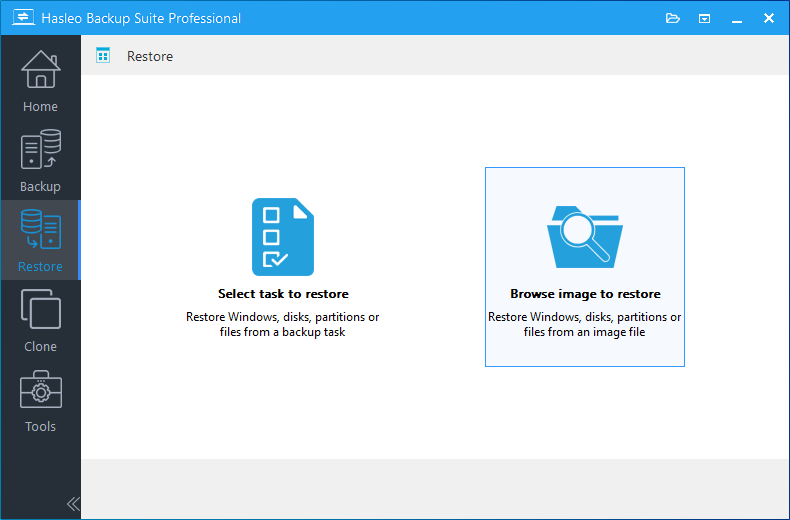
Step 3. Select the backup version you want to restore. Then, choose "System mode" and click the "Next" button.
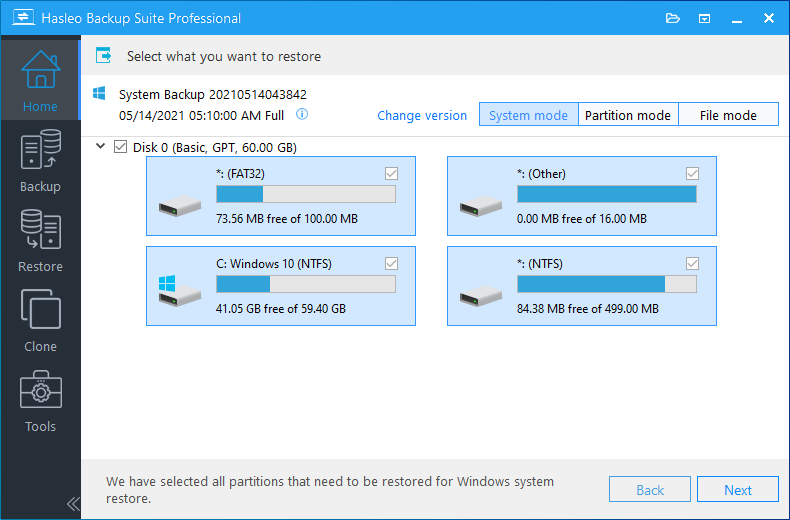
Step 4. Select the destination disk you want to restore the Windows operating system to, and check the "Restore as MBR" checkbox, then click "Next".
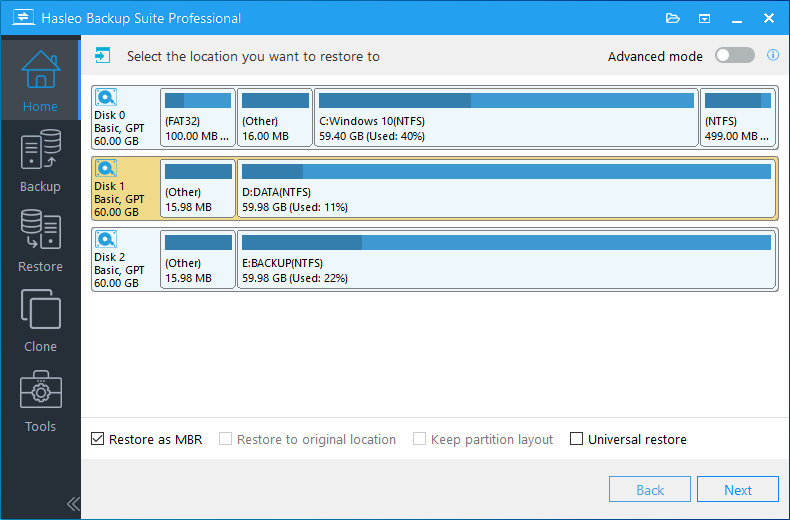
Step 5. Adjust the size and location of the partitions as needed, then click "Proceed". A warning message may pop up to tell you that all data on the destination drive will be destroyed. Click "Yes" to continue if you have no important data on the destination disk. Please note that if you choose to restore Windows to the original disk, Hasleo Backup Suite needs to be restarted into a Pre-OS environment to complete the clone operation. Just follow the prompts.
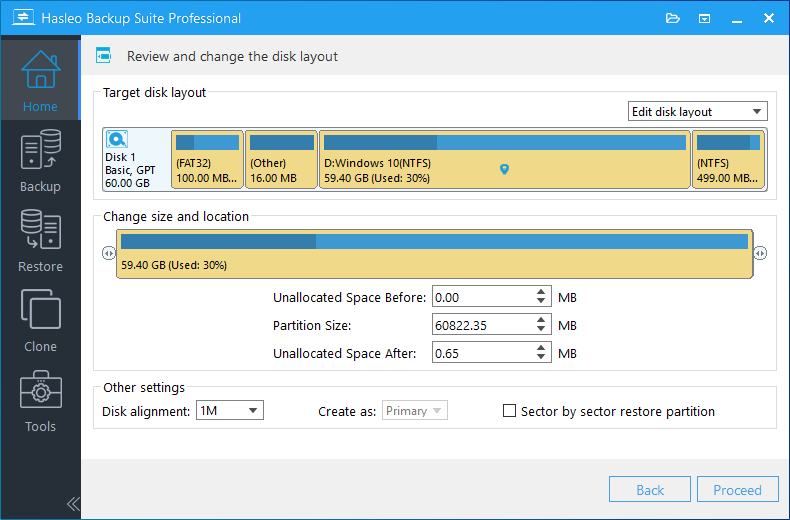
Step 6. Hasleo Backup Suite began restoring the Windows operating system to the destination disk. Please note that the time required for restore operation is related to the size of the data that needs to be restored, so please be patient.
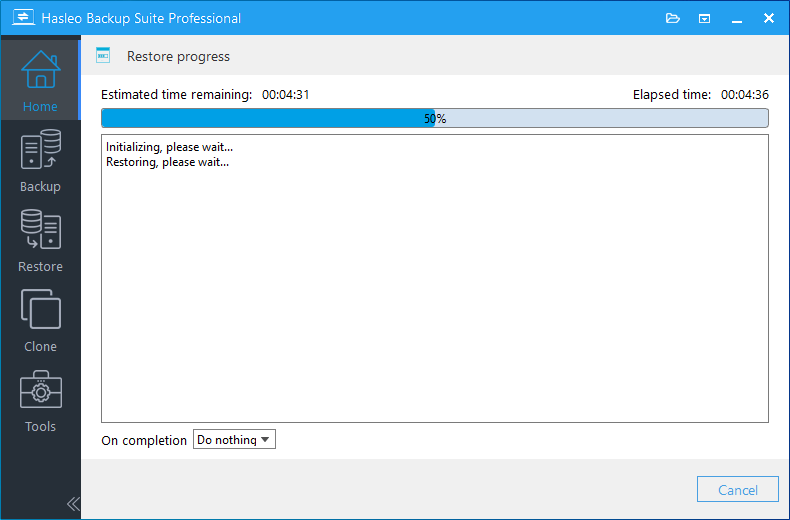
Step 7. After the clone operation is complete, restart the computer and change the boot sequence to boot from the destination disk in BIOS mode.
This tutorial describes how to restore a GPT system backup image to an MBR disk using Hasleo Backup Suite. As professional Windows backup and cloning software, Hasleo Backup Suite also supports restoring an MBR system backup image to a GPT disk.